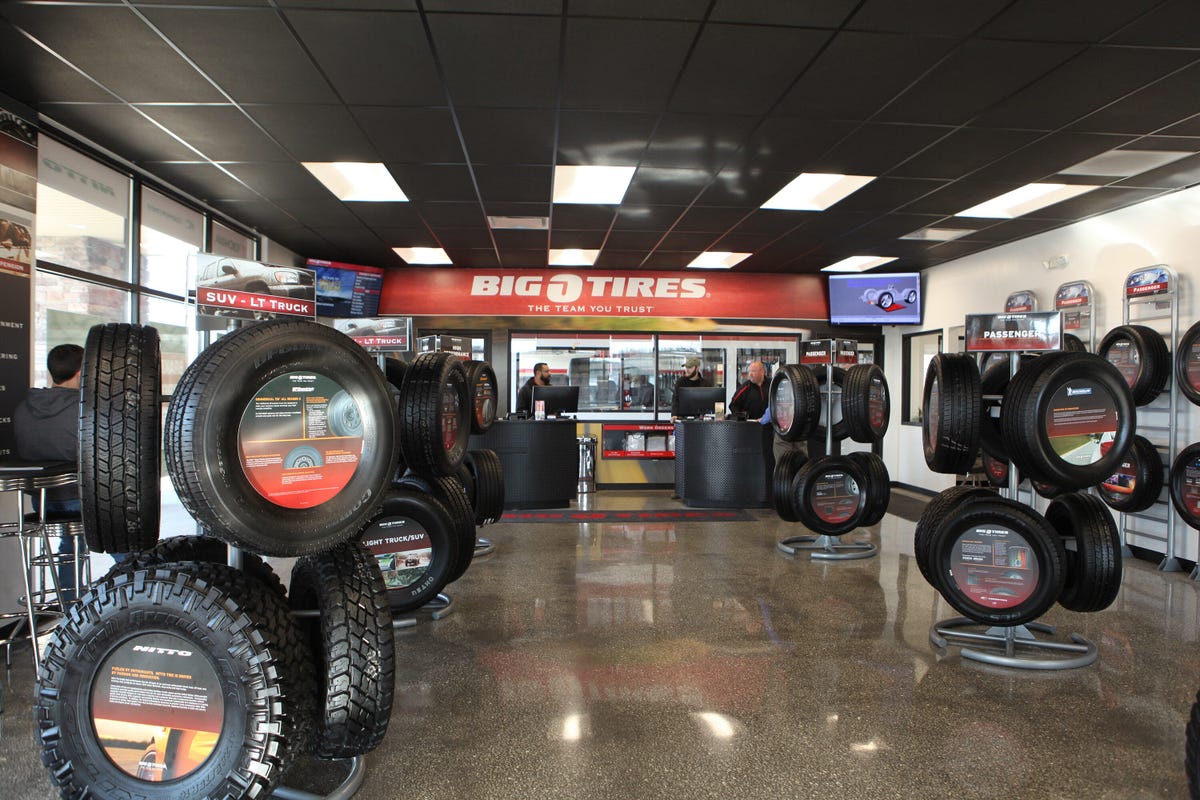Tire Solution: Recognizing Tire Pressure Tracking Equipments
Comprehending Tire Pressure Tracking Equipments (TPMS) is a vital facet of preserving optimum automobile performance and safety and security when traveling. With improvements in automotive technology, TPMS has actually come to be a conventional feature in modern-day vehicles, giving real-time info on tire stress levels. Diving deeper into the ins and outs of TPMS, one can discover the different parts that comprise this system and the value of each in guaranteeing exact monitoring. From straight to indirect TPMS systems, the landscape of tire pressure tracking is varied, each with its one-of-a-kind set of factors to consider and benefits. Keep tuned to unwind the complexities of TPMS, from maintenance suggestions to the indisputable advantages of keeping your tires effectively inflated. morris tire and alignment.

Relevance of TPMS
The relevance of Tire Pressure Monitoring Solutions (TPMS) lies in their capability to boost lorry safety and security and efficiency with real-time surveillance of tire pressure levels. Keeping the proper tire stress is critical for ensuring optimal handling, stopping, and general safety of a lorry. TPMS provides vehicle drivers with prompt responses on any kind of overinflated or underinflated tires, permitting prompt adjustments to be made.
Components of TPMS
Sensing units are commonly situated in the tire shutoff stem or attached to the wheel setting up, where they determine tire pressure and transmit data to the control module. Some advanced TPMS versions likewise display the actual tire pressure readings for each tire, offering motorists with real-time details to guarantee ideal tire performance and safety and security. By monitoring tire stress constantly, TPMS assists protect against mishaps, reduces tire wear, and boosts gas effectiveness, making it a critical element for lorry safety and performance. tire shop morris.
Sorts Of TPMS

On the various other hand, indirect TPMS relies upon the automobile's wheel speed sensors to keep an eye on tire pressure. This system finds underinflation by contrasting the rotational rates of the wheels. Indirect TPMS is much less pricey than direct TPMS, as it makes use of existing sensing units within the lorry.
While direct TPMS uses extra exact readings, indirect TPMS is easier in style and typically requires less maintenance. Both systems have their constraints and benefits, and the choice in between them usually relies on aspects such as cost, vehicle make, and individual choice. Comprehending the differences in between these two kinds of TPMS can aid lorry owners make informed choices relating to tire maintenance and safety and security.
TPMS Upkeep Tips
Conduct routine checks on the tire stress levels and contrast them with the TPMS readings to guarantee they are consistent. Throughout tire rotation or substitute, make certain that the TPMS parts are managed carefully to protect against any type of prospective damage. If the TPMS cautioning light illuminates on the dashboard, attend to the problem immediately by checking the tire pressures and the general system for any type of faults.
Benefits of Correct Tire Stress
Maintaining appropriate tire stress, as highlighted in TPMS Maintenance Tips, see it here is vital for reaping the countless benefits linked with optimal tire stress levels. Among the key benefits of maintaining the right tire pressure is enhanced fuel efficiency. When tires are properly blown up, there is much less moving resistance, resulting in better gas economic situation. Furthermore, appropriate tire stress ensures even tire wear, extending the life expectancy of the tires and promoting that site much safer driving problems. With the right tire stress, lorries likewise have far better handling and grip, specifically in adverse weather. This can improve overall driving performance and safety for the motorist and passengers. Furthermore, preserving optimum tire pressure can add to a smoother and much more comfy ride by reducing resonances and sound triggered by underinflated tires. To conclude, the benefits of appropriate tire stress go beyond simply tire durability; they include boosted fuel efficiency, boosted safety, much better vehicle efficiency, and total driving comfort.
Conclusion
Finally, understanding tire pressure tracking systems (TPMS) is critical for keeping ideal tire stress and guaranteeing automobile safety. By recognizing the significance of TPMS, knowing with its parts, recognizing the various kinds available, sticking to appropriate upkeep suggestions, and realizing the advantages of maintaining appropriate tire stress, vehicle drivers can boost their driving experience and prolong the lifespan of their tires. Appropriate tire pressure is essential to effective and secure automobile procedure.

Comments on “Save Big with Mopar Tire Service Specials in Morris: Limited Time Uses”